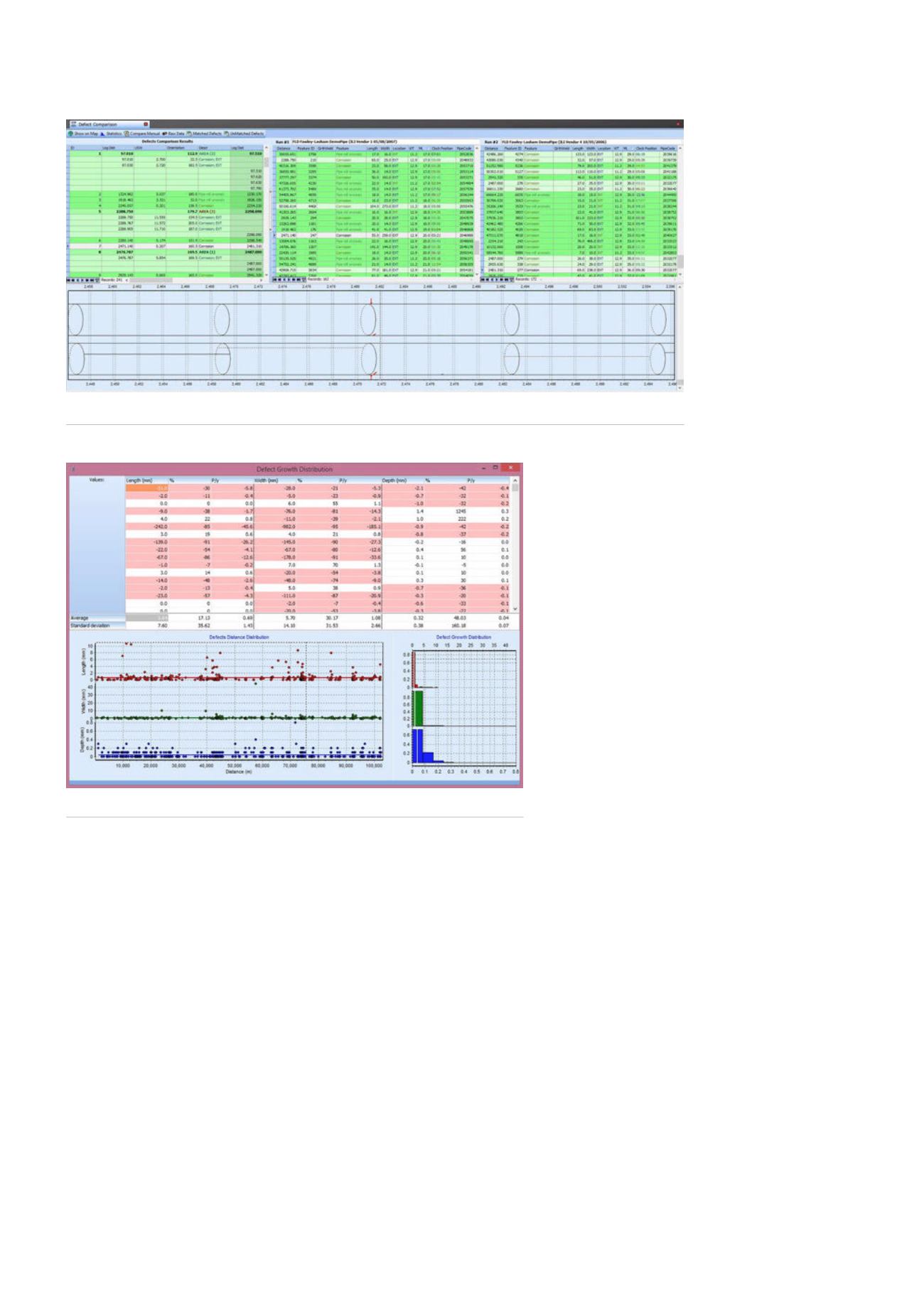
These documents contain all the information required for
the field engineers performing the excavation, including the
co-ordinates of the defect, its exact clock position on the
pipe, the distance to the downstream and upstream markers
and valves, and the angular position of the longitudinal welds
for targeted and neighbouring joints. This allows engineers to
find the exact location of excavation and be able to identify
the defects to be repaired.
Run comparison
Pipelines can be inspected by ILI methods at different times
during the life of the pipeline. This means that for the same
pipeline, it is likely that multiple sets of defects are detected at
different times, possibly by different inspection companies. It
is also likely that the inspections carried out at different times
by different companies describe the same defects. It therefore
becomes very interesting for the integrity engineer to be able
to track the development of these defects over time.
Despite its apparent
simplicity, the task of
comparing pig runs is not
entirely straightforward.
When we know the
parameters of the defect
now and the parameters
five years ago, it is not
difficult to calculate
how much it may have
‘grown’. The challenge
is to be able to identify
the anomalies found in
the previous run and the
anomalies found in the
latest run are actually
describing the same
defect.
Considering that the number of anomalies
found in a pig run report can reach into the
millions for both runs, the task of ‘run comparison’
becomes close to impossible by manual analysis.
Integrity experts can still undertake this kind of
analysis with the help of readily available tools
(such as MS Excel) but the quality and results of
the work could raise some doubts.
The PiMSlider ILI Expert module provides a
comprehensive set of ILI run comparison features.
What would normally be weeks of manual labour
comparing runs can now be replaced by the touch
of a button, as the software will automatically
find all the matching (and non-matching) defects
between the two pig runs.
It is then possible to automatically generate
reports, which include compared and non-
compared defects, a list of the omitted or
newly discovered joints, and the statistical
corrosion rate over the entire length of the
pipeline with the calculation of average values
and the mean distribution.
Repair planning
Whilst the PiMSlider ILI Expert module is a great tool for
analysing and documenting the results of ILIs, the next logical
step is to generate a detailed action plan, in order to address
the threats to the integrity of the pipeline based on the
results of ILI data analysis. A generated plan can include two
kinds of repair:
)
)
An urgent repair.
)
)
The need for an additional examination of the defect
(including non-destructive inspection methods – such as
NDT).
The ILI Expert module includes a complete set of tools
for assigning, storing, reporting and analysing NDT data. The
module also allows you to compare NDT data with ILI data.
Figure 2.
PiMSlider – ILI run comparison feature.
Figure 3.
Defect growth comparison screenshot.
40
World Pipelines
/
FEBRUARY 2016


